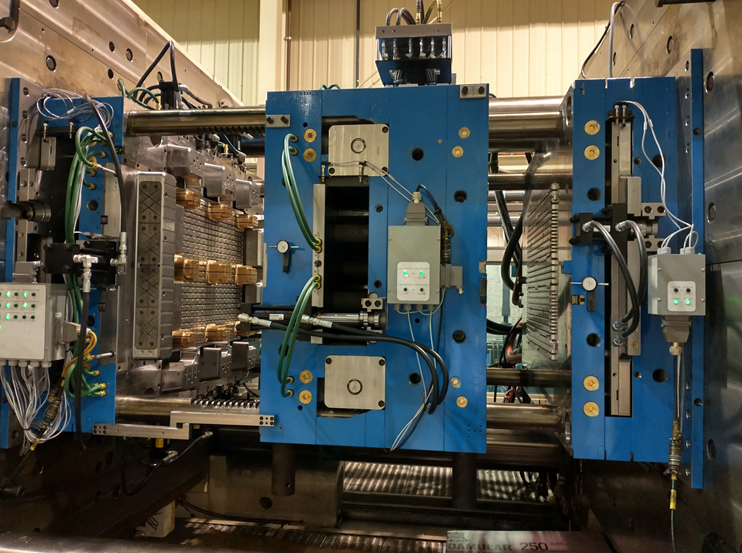Creating an English Plastic Big Chair Mould
Plastic chairs have become an essential part of our daily lives. They are lightweight, durable, and versatile. These chairs are widely used in homes, offices, schools, and outdoor spaces. To meet the growing demand for plastic chairs, manufacturers have started to invest in creating high-quality moulds for the production of plastic chairs. In this article, we will explore the process of creating an English mold ເກົ້າອີ້ພາດສະຕິກ.
Designing the Mould:
The first step in creating a plastic chair mould is designing it. The design process involves conceptualizing the shape, size, and features of the chair. In the case of a big chair mould, special attention is given to ensuring it can support the weight of an adult. The design also includes details such as armrests, backrest, and legs. Computer-aided design (CAD) software is commonly used for creating precise and detailed designs.
Material Selection:
Once the design is finalized, the next step is selecting the appropriate material for the mould. The choice of material depends on various factors, including the expected lifespan of the mould, the number of cycles it can withstand, and the type of plastic used for chair production. Commonly used materials for mould making include steel, aluminum, and composite materials. Each material has its own set of advantages and disadvantages, so careful consideration is given to choose the most suitable one.
Mould Manufacturing:
After the material selection, the manufacturing of the mould begins. This process involves shaping the selected material into the desired form. For metal moulds, various techniques such as milling, drilling, and grinding are used to shape the metal. For composite materials, a combination of resin and fiber reinforcement is used to create a strong and durable mould. The manufacturing process requires precision and expertise to ensure the mould’s accuracy and functionality.
Surface Treatment:
Once the mould is manufactured, it undergoes surface treatment to enhance its durability and performance. Surface treatment is essential to prevent corrosion, wear, and tear. Techniques such as polishing, coating, and electroplating are commonly used to improve the surface quality of the mould. The surface treatment also helps in improving the release of the plastic chair from the mould, allowing for smooth and efficient production.
Testing and Adjustments:
After the surface treatment, the mould is tested to ensure its functionality and performance. The mould is installed in an injection molding machine, and a test run is conducted. The test run helps in identifying any flaws or issues with the mould. If any adjustments or modifications are required, they are carried out at this stage. The goal is to achieve a perfectly functioning mould that can produce high-quality plastic chairs consistently.
Production:
Once the mould passes the testing phase, it is ready for production. The mould is installed in an injection molding machine, and the plastic material is injected into the mould cavity. The mould is then cooled down, and the plastic chair is ejected. This process is repeated multiple times to produce a large quantity of plastic chairs. The production process requires proper maintenance and monitoring to ensure the mould’s longevity and the quality of the chairs produced.
The creation of an English plastic big chair mould involves several steps, including designing, material selection, mould manufacturing, surface treatment, testing, and production. Each step requires precision, expertise, and attention to detail. By following this process, manufacturers can create high-quality moulds that can produce durable and reliable plastic chairs for various applications.
ທີ່ຜ່ານມາ:Creating a Plastic Paint Bucket Mould: A Step-by-Step Guide
ຕໍ່ໄປ: Producing High-Quality Large Plastic Molds: A Guide to Success
-
How do metal insert molds play a role in manufacturing?
2024-11-26
Metal insert molds play an important role in the manufacturing industry. They not only improve the production efficiency...
ເບິ່ງລາຍລະອຽດ -
Plastic injection box mold: a new choice for efficient manufacturing
2024-3-29
Speaking of efficient manufacturing, how can we not mention plastic injection box molds? This thing is simply a "little ...
ເບິ່ງລາຍລະອຽດ -
Procuring Large Plastic Molding Services
2023-6-17
Large plastic molding services are an essential aspect of many manufacturing processes. These services are necessary for...
ເບິ່ງລາຍລະອຽດ -
Introduction to Gate Injection Molding: Advantages and Applications
2023-8-2
Gate injection molding is a widely used manufacturing process that involves injecting molten material into a mold cavity...
ເບິ່ງລາຍລະອຽດ -
Wholesale Injection Molding Parts Online: A Key Component for Manufacturing Success
2023-5-10
Injection molding is a widely used manufacturing process that involves melting plastic pellets and injecting the molten ...
ເບິ່ງລາຍລະອຽດ -
Manufacturing High-Quality Industrial Molding Parts for Optimal Performance
2023-5-23
Manufacturing high-quality industrial molding parts is essential to ensure optimal performance in various industries suc...
ເບິ່ງລາຍລະອຽດ








